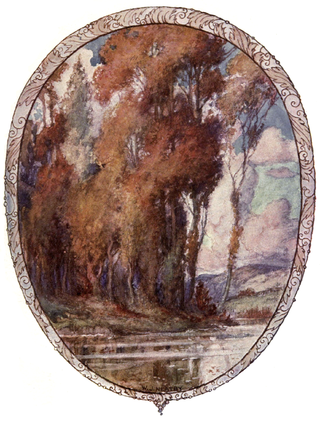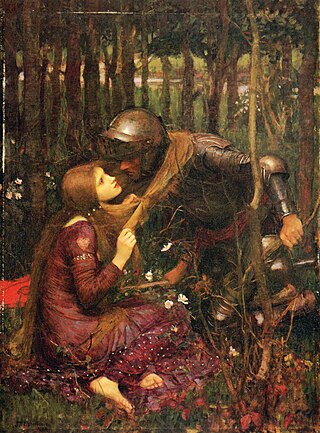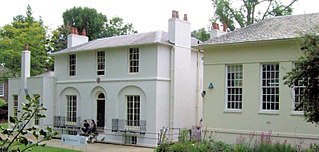
John Keats was an English poet of the second generation of Romantic poets, along with Lord Byron and Percy Bysshe Shelley. His poems had been in publication for less than four years when he died of tuberculosis at the age of 25. They were indifferently received in his lifetime, but his fame grew rapidly after his death. By the end of the century, he was placed in the canon of English literature, strongly influencing many writers of the Pre-Raphaelite Brotherhood; the Encyclopædia Britannica of 1888 called one ode "one of the final masterpieces". Jorge Luis Borges named his first time reading Keats an experience he felt all his life. Keats had a style "heavily loaded with sensualities", notably in the series of odes. Typically of the Romantics, he accentuated extreme emotion through natural imagery. Today his poems and letters remain among the most popular and analysed in English literature – in particular "Ode to a Nightingale", "Ode on a Grecian Urn", "Sleep and Poetry" and the sonnet "On First Looking into Chapman's Homer".

Bryan Waller Procter was an English poet who served as a Commissioner in Lunacy.

"To Autumn" is a poem by English Romantic poet John Keats. The work was composed on 19 September 1819 and published in 1820 in a volume of Keats's poetry that included Lamia and The Eve of St. Agnes. "To Autumn" is the final work in a group of poems known as Keats's "1819 odes". Although personal problems left him little time to devote to poetry in 1819, he composed "To Autumn" after a walk near Winchester one autumnal evening. The work marks the end of his poetic career, as he needed to earn money and could no longer devote himself to the lifestyle of a poet. A little over a year after the publication of "To Autumn", Keats died in Rome.

"Ode to a Nightingale" is a poem by John Keats written either in the garden of the Spaniards Inn, Hampstead, London or, according to Keats' friend Charles Armitage Brown, under a plum tree in the garden of Keats' house at Wentworth Place, also in Hampstead. According to Brown, a nightingale had built its nest near the house that he shared with Keats in the spring of 1819. Inspired by the bird's song, Keats composed the poem in one day. It soon became one of his 1819 odes and was first published in Annals of the Fine Arts the following July. The poem is one of the most frequently anthologized in the English language.

"La Belle Dame sans Merci" is a ballad produced by the English poet John Keats in 1819. The title was derived from the title of a 15th-century poem by Alain Chartier called La Belle Dame sans Mercy.

"Ode on a Grecian Urn" is a poem written by the English Romantic poet John Keats in May 1819, first published anonymously in Annals of the Fine Arts for 1819.

The "Ode on Indolence" is one of five odes composed by English poet John Keats in the spring of 1819. The others were "Ode on a Grecian Urn", "Ode on Melancholy", "Ode to a Nightingale" and "Ode to Psyche". The poem describes the state of indolence, a word which is synonymous with "avoidance" or "laziness". The work was written during a time when Keats was presumably more than usually occupied with his material prospects. After finishing the spring poems, Keats wrote in June 1819 that its composition brought him more pleasure than anything else he had written that year. Unlike the other odes he wrote that year, "Ode on Indolence" was not published until 1848, 27 years after his death.

Pascale Petit, is a French-born British poet of French, Welsh and Indian heritage. She was born in Paris and grew up in France and Wales. She trained as a sculptor at the Royal College of Art and was a visual artist for the first part of her life. She has travelled widely, particularly in the Peruvian and Venezuelan Amazon and India.

Waldo Goronwy Williams was one of the leading Welsh-language poets of the 20th century. He was also a notable Christian pacifist, anti-war campaigner, and Welsh nationalist. He is often referred to by his first name only.

Romantic poetry is the poetry of the Romantic era, an artistic, literary, musical and intellectual movement that originated in Europe towards the end of the 18th century. It involved a reaction against prevailing Enlightenment ideas of the 18th century, and lasted approximately from 1800 to 1850. Romantic poets rebelled against the style of poetry from the eighteenth century which was based around epics, odes, satires, elegies, epistles and songs.

Keats House is a writer's house museum in what was once the home of the Romantic poet John Keats. It is in Keats Grove, Hampstead, toward the edge of inner north London. Maps before about 1915 show the road with one of its earlier names, John Street; the road has also been known as Albion Grove. The building was originally a pair of semi-detached houses known as "Wentworth Place". John Keats lodged in one of them with his friend Charles Brown from December 1818 to May 1820, and then in the other half of the house with the Brawne family from August to September 1820. These were perhaps Keats's most productive years. According to Brown, "Ode to a Nightingale" was written under a plum tree in the garden.

Sir Andrew Jonathan Bate, CBE, FBA, FRSL, is a British academic, biographer, critic, broadcaster, scholar, and occasional novelist, playwright and poet. He specializes in Shakespeare, Romanticism and Ecocriticism. He is Regents Professor of Literature and Foundation Professor of Environmental Humanities in a joint appointment of the College of Liberal Arts, the School of Sustainability and the Global Futures Laboratory at Arizona State University, as well as a Senior Research Fellow at Worcester College in the University of Oxford, where he holds the title of Professor of English Literature. Bate was Provost of Worcester College, Oxford, from 2011 to 2019. From 2017 to 2019 he was Gresham Professor of Rhetoric in the City of London. He was knighted in 2015 for services to literary scholarship and higher education. He is also Chair of the Hawthornden Foundation.
Nationality words link to articles with information on the nation's poetry or literature.

"A Defence of Poetry" is an unfinished essay by Percy Bysshe Shelley written in February and March 1821 that the poet put aside and never completed. The text was published posthumously in 1840 in Essays, Letters from Abroad, Translations and Fragments. Its final sentence expresses Shelley's famous proposition that "poets are the unacknowledged legislators of the world."
The Keats-Shelley Prize was inaugurated in 1998 by the Keats-Shelley Memorial Association. Its purpose is to encourage people of all ages to respond personally to the emotions aroused in them by the work of the Romantics, through rising to the challenge of writing their own poem or essay. Distinguished judges of the Prize have included Andrew Motion, Claire Tomalin, Tom Paulin, Grevel Lindop, Miranda Seymour, the late Lord Gilmour, James Fenton, Stephen Fry, Jonathan Keates, A.N.Wilson, Ann Wroe, Janet Todd, Jack Mapanje, Dame Penelope Lively, Colin Thubron and Salley Vickers.
John Hamilton Reynolds was an English poet, satirist, critic, and playwright. He was a close friend and correspondent of poet John Keats, whose letters to Reynolds constitute a significant body of Keats' poetic thought. Reynolds was also the brother-in-law of the writer and humorist Thomas Hood, who was married to his sister Jane.

Clive Hicks-Jenkins is a Welsh artist known especially for narrative paintings and artist's books. His paintings are represented in all the main public collections in Wales, as well as others in the United Kingdom, and his artist's books are found in libraries internationally. A retrospective exhibition comprising some 200 works from across the artist's career loaned from public and private collections was held by the National Library of Wales in 2011 to coincide with his sixtieth birthday. A substantial multi-author book devoted to his work was published by Lund Humphries in 2011, in which Simon Callow called him "one of the most individual and complete artists of our time".
Sarah Helen Prescott FLSW is Professor of English Literature at Aberystwyth University and a non-fiction writer, specializing in the history of Welsh literature in English. She is also the director of the university's Institute of Literature, Languages and Creative Arts (ILLCA).

Romanticism was an artistic, literary, and intellectual movement that originated in Europe toward the end of the 18th century. Scholars regard the publishing of William Wordsworth's and Samuel Coleridge's Lyrical Ballads in 1798 as probably the beginning of the movement in England, and the crowning of Queen Victoria in 1837 as its end. Romanticism arrived in other parts of the English-speaking world later; in the United States, it arrived around 1820.
Howard Sidney (Sid) Thomas, FWIF, FLSW was a plant scientist at the Welsh Plant Breeding Station and later the University of Aberystwyth, and also a jazz musician and composer. He became Emeritus Professor of Biological, Environmental and Rural Sciences, University of Aberystwyth.













